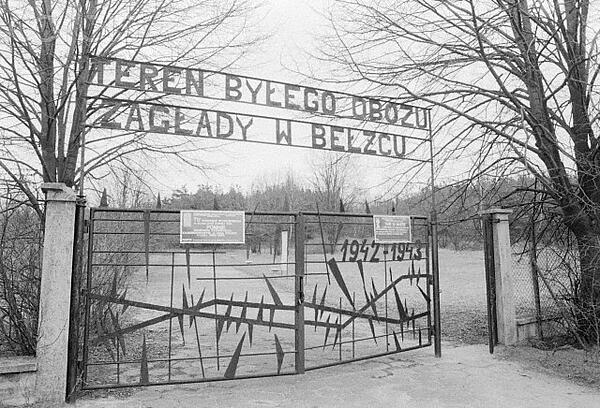Belzec
Belzec was a Nazi death camp that was built as part of Operation Reinhard. Belzec is a remote town based in the south east of Poland. Although it was first opened in November 1941, it was not until in March 1942 that the camp became fully operational and it was then closed by the end of that same year. However, despite only being open for around nine months, the Belzec camp was still responsible for the deaths of 600,000 people as part of the Holocaust.
At first there were three different gas chambers used at the camper but this was later doubled due to the large numbers people that were sent to Belzec. The camp was much smaller than some of the large death camps the Nazis used such as Auschwitz.

Belzec was split into two main sections: one half the camp was used for storage for the belongings of people who were held there and the second half contained the gas chambers as well as the pits were the dead bodies were buried. These two parts of the camp were connected by a narrow tunnel surrounded by barbed wire, which was dubbed ‘The Tube’.
As was the case in many of the Nazi death camps, when Jews were sent by train to Belzec they would be split into two groups: the fit and the healthy would be sent away for labour while the women, child and weak would be taken to the ‘shower blocks’, which was the term used for the gas chambers were they would die as a result of carbon monoxide being pumped in - it would take around half an hour for them to die this way. Some of the other prisoners, who known as the Sonderkommando would go around the dead bodies and remove any gold teeth or valuables on them.
As many documents from Belzec were destroyed at the camp, it is impossible to come to know exactly how many people were killed there. Historians have estimated that 600,000 Jews and 12,000 Roma gypsies lost their lives at the Belzec death camp.
Upon its closure in December 1942 the camp was turned into a farm.
MLA Citation/Reference
"Belzec". HistoryLearning.com. 2026. Web.
